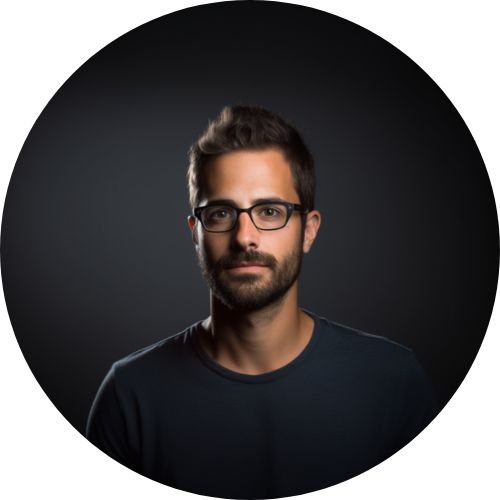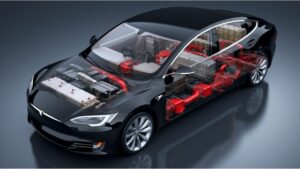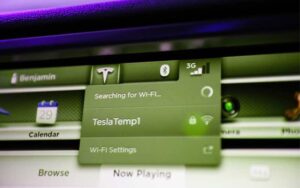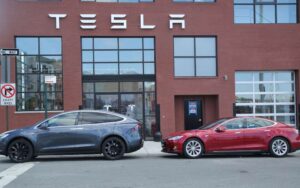Tesla Freezing Temperatures: All You Need To Know
Under seemingly extreme weather conditions, it is common to experience some degree of alteration in EV performance, including Tesla vehicles.
You must have sat down to wonder how cold weather climates and freezing temperatures affect the performance of Tesla vehicles.
To what degree is the effect of freezing temperatures on Tesla, and what should you know?
All Tesla model designs can withstand cold weather climates and low-freezing temperatures and would run fine. However, the freezing temperature of 32 degrees Fahrenheit indeed alters the overall performance of Tesla vehicles. Nevertheless, there are a few tips to drive and protect your Tesla vehicle from cold weather.
It is true that the performance of literally everything is affected at freezing temperatures; however, “Are electric vehicles inclusive”?
You are in the right place if your research includes Tesla freezing temperatures and how cold weather affects your Tesla vehicle.
Does Tesla Work Below Freezing Temperatures?

Yes, Tesla will run excellent below-freezing temperatures. Tesla vehicles can drive in cold climates and withstand frigid temperatures as low as 32 degrees Fahrenheit.
Tesla is among the most efficient electric vehicles in cold weather, even below-freezing temperatures.
However, you are likely to experience a few alterations to the overall performance of the vehicle under such extreme weather temp.
So, just as cold weather climate and freezing temperatures alter the performance of all-electric vehicles, the same applies to Tesla.
During winter, the outside cold weather climate and freezing temperatures alter the chemistry of Tesla vehicle batteries.
For this reason, you need to apply a little more caution and extra care to protect your vehicle from the cold weather.
The following tips will be helpful when using your vehicle under cold weather and freezing temperatures.
Firstly, always keep your garage while not in use during the winter period. If your vehicle must be outside, ensure the battery charge is well above 30%.
I recommend that your car battery is on full charge whenever the car is unplugged, especially during cold weather climates.
Secondly, always warming the vehicle’s components before driving your Tesla under a freezing temperature is wise.
So, you’ll have to run the vehicle to pre-condition and heat the Tesla high-voltage battery before use.
Finally, for your Tesla vehicles to work efficiently without many tussles during cold weather or freezing temperatures, you have to drive gently.
Try to limit the vehicle’s sudden acceleration and extreme deceleration as much as possible while driving.
With the above tips, you can be sure that your Tesla vehicle will work in cold weather climates, even under freezing temperatures.
Is Cold Weather Bad For Tesla?
Cold weather climate isn’t exactly the most suitable weather condition for Tesla vehicles. So, the cold weather climate is terrible for Tesla vehicles.
Under cold weather conditions, the overall performance of EVs suffers, including Tesla vehicle models.
One of the significant differences you’ll observe with EVs during cold weather is reduced car drive range. EVs’ driving range decreases in winter as obtained in summer seasons.
The primary reason for the reduced drive range of Tesla vehicles in cold climates is the modalities in place for cold weather.
As you’d know already, under cold weather, heat becomes paramount for optimum performance and comfort.
And unlike vehicles with internal combustion engines fueled by gasoline, Tesla needs to generate extra heat to warm up the components.
Electric vehicle heaters and heat pumps need power from the battery to keep the vehicle warm.
For this reason, power generates additional heat, which means more work on the battery, thereby reducing drive range.
In like manner, since it is freezingly cold, the vehicle’s interior cabin and the passengers’ comfort should come into the picture.
So, in cold weather, you’ll have to use the Tesla-provided climate control to comfort the interior.
It means the vehicle will use much more power under cold weather. Hence, the battery will condition itself to generate heat and energy for the car drivetrain for movement.
Therefore, the cold weather is not exactly going for Tesla. However, Tesla will drive well even under freezing temperatures with only a few changes to its performance.
The table below gives the drive range difference to temperature change for a Tesla Model Y.
| Temp. (degree Fahrenheit) | Drive Range (miles) | Drive Range Percentage drop |
|---|---|---|
| 55-65 | 267 | Reference temp. |
| 25-30 | 223 | 16.5% |
| 15-20 | 194 | 28.1% |
How Long Can Tesla Sit In Freezing Temperatures?
Tesla can sit in freezing temperatures for about 12-15 hours while keeping the vehicle’s cabin warm.
The Tesla vehicle can last 12 hours with a fully charged battery while powering all the climate control features.
On the contrary, Tesla will sit in freezing temperatures for 18 hours and even more without the climate control features.
So, how long a Tesla can sit in freezing temperatures depends on how much power the Tesla battery supplies.
Ideally, Tesla sitting translates to Tesla idling, the Tesla vehicle running without traveling any distance. However, there’s a difference between Tesla sitting and idling.
During cold weather climates or winter season, the idling feature becomes of utmost importance because of the relief it brings.
To drive and protect your Tesla vehicle in freezing temperatures, you must always run the vehicle to keep it warm.
However, the Tesla vehicle battery’s design makes the vehicle much more adapted to freezing temperatures.
The Tesla battery is so intelligent that it can intuitively measure the overall power supply to the vehicle components.
This way, it is easy for the Tesla vehicle to sit in freezing temperatures for a very long time with varying conditions.
Therefore, you can remain comfortable in your car if you’re ever in traffic under a cold freezing temperature.
The traffic situation is even less troubling with the “camp mode” available to Tesla vehicles. Tesla camp mode comes in handy in cold and freezing temperatures.
With the camp mode, the Tesla vehicle can sit in freezing temperatures for an extended period.
Realistically, with the camp mode available for Tesla vehicles, the vehicle can sit in freezing temperatures for 40+ hours.
Should I Plug In My Tesla In Freezing Temperatures?
There is no harm in plugging in your Tesla vehicle in freezing temperatures. Plugging your Tesla in cool temperatures is, in fact, a protective measure for the Tesla vehicle.
As stated earlier, cold weather climates and freezing temperatures alter the chemistry of Tesla vehicle batteries.
Therefore, you must plug in your Tesla for the battery to remain in its top shape and functionality.
However, in such temperature conditions, you need a bit more caution and extra care while charging the vehicle. Cold freezing temperatures generally affect a lot of activities for the EV.
The Tesla charge port latch can become frozen due to the cold freezing weather condition.
With a frozen charge port latch, your charging cable may not lock in when inserted; however, it will still charge. However, the charge rate will be at a slow AC rate.
For this reason, there’s a misconception that plugging Tesla vehicles in freezing temperatures is a bad practice.
However, in such a case, if the charge port latch freezes, you can manually thaw off the ice after releasing the charging cable. Guide on how to remove the Tesla charge cable manually.
In like manner, some Tesla vehicles come standard with an inlet heater in their charger port that turns as you activate the rear defrost.
Added to the defrost system of Tesla vehicles are heat pumps that help warms up the car and battery for charge.
The heat pump is a thermal system available on Tesla vehicles that produces steam under cold weather climates.
Nevertheless, it is easy to avoid a frozen latch by using a schedule charge setting available to Tesla vehicles.
In conclusion, with all the modalities in place and their correct use, you can plug your Tesla into freezing temperatures.

Hey, I’m Michael Davis, a 35-year-old with a degree and a love for cars and tech. Since I was a kid, cars have been my thing—so much that I even thought they ran on magic beans! Fast forward, and I’ve built Vehicle Army, your one-stop-shop for easy-to-understand car facts.






